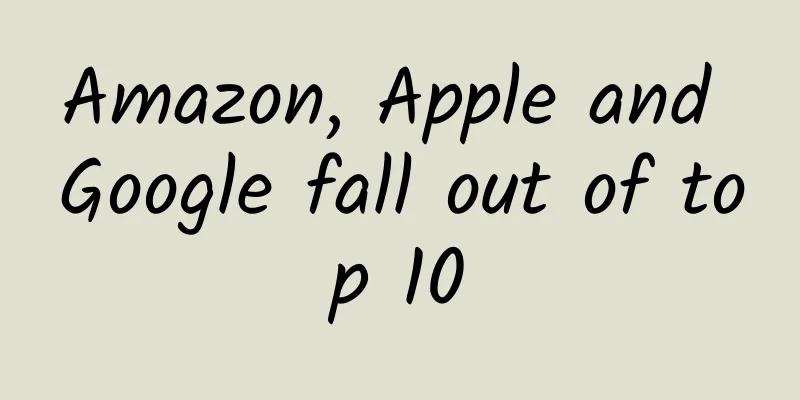Windows Phone is dead, but why don't we feel sorry for it?

|
Of course, we will continue to support the platform, such as bug fixes, security updates, etc. But we will no longer focus on adding new features. Windows Phone is dead The person who said the above sentence was Joe Belfiore, the former vice president of Microsoft who was in charge of Windows Phone. Just a few days ago, when a netizen asked about Microsoft's mobile operating system Windows Phone (now officially called Windows 10 Mobile) on Twitter, Joe Belfiore gave this answer. Although this answer is not surprising, it is almost equivalent to Microsoft officially announcing the death of Windows Phone. Foreign media commented on Joe Belfiore's words that he had nailed the final nail in the coffin of Windows Phone. In addition to the above, Joe Belfiore also posted a message on Twitter saying that Microsoft has made a lot of efforts to promote application development on this platform, spent a lot of money, and wrote a lot of software, but the number of Windows Phone users is so small that most companies are unwilling to invest in it. Joe Belfiore's statement that "there are too few users" is indeed true. According to the Q1 2017 smartphone market report released by market research firm IDC, Windows Phone only has a 0.1% market share worldwide. In its 2016 forecast, IDC believed that Windows Phone's share would reach 0.1% in 2020; unexpectedly, Microsoft reached this tragic situation three years ahead of schedule. Considering that IDC's report is a few months old, perhaps Windows Phone's current market share is less than 0.1%. According to Leiphone.com (official account: Leiphone.com), in fact, the phone currently used by Joe Belfiore is a Samsung Galaxy S8 with Microsoft software installed, and Microsoft founder Bill Gates also said in an interview at the end of September that he has switched to Google's Android system. There is no doubt that Windows Phone is dead. A short 6-year career Although Microsoft announced the launch of Windows Phone in October 2010, it was not until October 2011 that Nokia launched the Windows Phone Lumia 800. Therefore, from the perspective of the time before and after, Windows Phone only lasted for 6 years from birth to death. In the past six years, Windows Phone has experienced a lot of ups and downs, which is another long story. However, Leifeng.com believes that from the perspective of the entire mobile operating system market, Windows Phone has always been a marginalized role. The following two figures are also a set of data from IDC, which respectively record the changes in market share of various mainstream smartphone operating systems during the golden period of rapid development of smartphones and in the past two years. From these two pictures we can see the following points: Only Android and iOS have a market share greater than 10%, while the others are all below 10%;
This is undoubtedly a sad story for Microsoft and Windows Phone. The sadness of this story is not because the opponent is too strong to be surpassed, but because it has never had the opportunity to truly stand on the competition stage of mobile operating systems. From the beginning to the end, there were only two players on that stage, iOS and Android; and third-party niche operating systems including Firefox OS, Web OS, Ubuntu Touch, etc. were just supporting roles. Yes, even Windows Phone, which is backed by the giant Microsoft, is no exception. Microsoft's two biggest failures In fact, for a long time at the beginning of its birth, Windows Phone was considered to be the third largest mobile phone operating system capable of challenging the dominance of Android and iOS; especially with the dual support of software giant Microsoft and hardware giant Nokia, the halo of Windows Phone was dazzling. However, the fact is that during the period of rapid growth of the smartphone market, Windows Phone did not seize the opportunity to become a mainstream mobile phone operating system. It could only stay outside the 10% and watch Android and iOS compete with each other, but it could do nothing. It is undeniable that one of the important reasons why Windows Phone cannot compete with Android and iOS is the lack of application ecology. However, the key obstacle encountered by Windows Phone in its development is still caused by Microsoft's own mistakes. In Leiphone.com's view, Microsoft's first major mistake was the gap in model support between Windows Phone 7 and Windows Phone 8.
In June 2012, when Microsoft released Windows Phone 8, it announced that due to the replacement of the kernel, all phones running Windows Phone 7 could not be upgraded to Windows Phone 8. This was a fatal blow to Windows Phone 7, which had just started a few months ago. At that time, Nokia's Lumia 800 and Lumia 900 and other Windows Phone 7 phones had just been released not long ago, and Microsoft's move was tantamount to announcing their death. In stark contrast, each generation of iOS is able to support the iPhone released three years ago. The acquisition of Nokia's mobile phone business can be said to be Microsoft's biggest failure in the development of Windows Phone. In September 2013, Microsoft acquired Nokia's mobile phone business for $7.2 billion, with the goal of leveraging Nokia's hardware advantages to support the development of Windows Phone. This was also the last legacy that former CEO Ballmer left for Microsoft before he left office. However, after Nadella took over as Microsoft CEO in February 2014, he began the process of leaving Nokia. In July 2014, Microsoft announced the layoff of 18,000 employees, 70% of whom were former Nokia employees. In October, Microsoft confirmed that it would no longer use Nokia as the brand name for Windows Phone phones, but instead "Microsoft Lumia".
In June 2015, Elop, the former Nokia CEO in charge of Microsoft hardware and Lumia phones, left Microsoft; in July, Nadella issued another statement that Microsoft planned to lay off 7,800 employees and write down the business assets related to Nokia devices and services by approximately US$7.6 billion. This figure even exceeded the total value of Microsoft's Nokia-related businesses at the time. It can be said that the acquisition of Nokia completely deprived Windows Phone of its chance to rise. On the one hand, Microsoft fell into financial difficulties and had to make up for it through various layoffs and business adjustments; on the other hand, almost only Lumia remained in the Windows Phone camp, and previous partners such as Samsung, HTC, and Huawei did not launch Windows Phone models. By the time Elop left Microsoft in 2015, the latest model in the Windows Phone camp was the Lumia 640/XL, which was equipped with a Qualcomm Snapdragon 400 processor and 1G of RAM.
The death of Windows Phone In July 2015, Microsoft released the Windows 10 operating system; at the same time, Windows Phone also entered the Windows Phone era. Originally, Microsoft planned to develop a symbiotic relationship between Windows 10 and Windows Mobile, and Microsoft hoped to encourage developers to develop applications for Windows 10 desktop version, and then share the applications with Windows 10 Mobile. This plan seemed ingenious, but it was quite difficult, and it was proved to be bankrupt in the subsequent development process. In October 2015, Microsoft released the Lumia 950/XL. Judging from the time allocation of the press conference, the weight of these two phones in Microsoft's many products has been significantly reduced. The biggest selling point of Lumia 950/XL has become its ability to transform into a desktop computer through the Continuum function. Under the call of Windows 10 Mobile, quite a few manufacturers joined the Windows Phone camp, such as HP, VAIO, Acer, etc. However, they still could not prevent the market share of Windows Phone from falling below 1% in March 2016. At the Microsoft Build 2016 conference held in April 2016, the Windows 10 desktop operating system became the only protagonist. No one mentioned the development and future plans of Microsoft Windows Phone, and no one took out a Windows Phone during the speech. Partners such as BMW and Starbucks also used iOS devices when they presented on stage. What is even more discouraging is that in 2016, Microsoft simply stopped updating the Lumia product line and sold its mobile phone hardware business to Foxconn in May 2016. Since then, Microsoft has successively stopped updating Lumia on various social accounts. However, at the software level, Microsoft has not completely given up its support for Windows Phone; not only that, Microsoft's partner HP has also launched Windows Phone models such as the Elite X3. But this is more like a last gasp for the defeat of Windows Phone, because products such as the Elite X3 are aimed at the enterprise market and are no longer accessible to the general consumer market.
Therefore, when Windows Phone is like a tree without roots and water without a source, it is only natural that its market share is rapidly approaching zero. Metabolism, as old as time When Satya Nadella, the new CEO of Microsoft, took office in 2014, he changed Microsoft's slogan to "Mobile First, Cloud First"; however, two years later, Nadella abandoned this slogan and adopted "Intelligent Cloud & Intelligent Edge" as Microsoft's new strategy. Obviously, from this new strategy, "mobile first" has been abandoned by Microsoft's strategy; in this case, the death of Windows Phone is inevitable. It can be said that the demise of Windows Phone marks the end of the last chapter of the development of the mobile Internet market at the operating system level, with Google and Apple becoming winners with Android and iOS respectively. Although Microsoft's dismal exit seems a bit tragic, it also conforms to the course of historical development; we don't need to feel sorry for Windows Phone. After all, metabolism has been going on since time immemorial. |
<<: Discovery, location and solution of a BUG
>>: Aiti Tribe Stories (29): What is it like to develop transformation testing?
Recommend
The "fission" battle between Luckin Coffee and Lian Coffee: Who is the growth king?
Two years ago, when people talked about drinking ...
Analysis of the e-commerce operation growth formula!
Compared with previous years, this year's Dou...
BMW wants to keep things simple to offset R&D costs
According to foreign media reports, BMW Chief Fin...
How would you set up an account for multi-region advertising?
Account structure is both our tool to control tra...
SAIC will officially launch its online car-hailing business, and its net profit in the first half of the year also soared by 18.982 billion yuan
On August 29, at a media briefing held by the Sta...
How to avoid “naked” marketing? 4 ways to teach you how to borrow endorsements
Naked marketing is a marketing method with no bra...
From games to social networking, why do Internet giants focus on the concept of the metaverse on the consumer side?
Since the concept of "Metaverse" became...
Radio apps are frequently removed from shelves, and the chaos continues
Among the many traditional industries that have b...
A comprehensive review of brand marketing during the Lunar New Year Festival | Tmall, JD.com, Suning, Vipshop, and NetEase Yanxuan
Having survived Double 11 and Double 12, it’s tim...
Android application source code for smart agriculture
Source code introduction This example is an Andro...
Google bidding advertising account opening, Google account opening fee, Google advertising display
Google promotion is divided into Google bidding p...
I have used the iPhone for so many years, but today I found out that it can also be used to weigh
Basic hardware requirements for iPhone weighing N...
How to improve YouTube ranking and marketing skills!
As competition in foreign trade marketing platfor...
Master the mainstream APP application market channel operation strategy with zero foundation
This article introduces paid CPD promotion in app...
Is e-commerce destroying the real economy? Shopping malls have become restaurants and children's playgrounds
In fact, even the "mall economy" that s...









